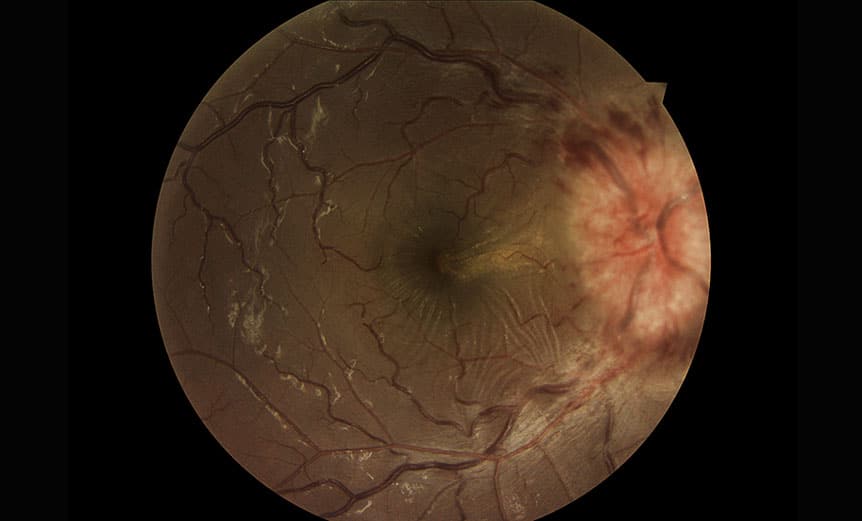Your Pulsatile tinnitus symptoms images are available. Pulsatile tinnitus symptoms are a topic that is being searched for and liked by netizens today. You can Get the Pulsatile tinnitus symptoms files here. Find and Download all royalty-free images.
If you’re looking for pulsatile tinnitus symptoms images information connected with to the pulsatile tinnitus symptoms keyword, you have come to the ideal site. Our website frequently gives you hints for downloading the maximum quality video and picture content, please kindly surf and locate more informative video content and images that match your interests.
Pulsatile Tinnitus Symptoms. Most people experience pulsatile tinnitus in just one ear, but it can occur in both. Pulsatile tinnitus is a form of tinnitus in which a rhythmical sound is heard that’s usually in time with the person’s heart rate. When it decreases, the beat or sound will slow. If you have tinnitus that has persisted for over a week or you have tinnitus along with dizziness or hearing loss you should make an appointment to see your doctor.
 Idiopathic intracranial hypertension consensus guidelines From jnnp.bmj.com
Idiopathic intracranial hypertension consensus guidelines From jnnp.bmj.com
But it may be noticed in one or both ear which can be loud and distracting, or even unbearable. Pulsatile tinnitus is a form of tinnitus in which a rhythmical sound is heard that’s usually in time with the person’s heart rate. When it decreases, the beat or sound will slow. Otoscopy findings, free field speech testing, tuning fork tests (if hearing loss) a uscultation of neck + around ear. The beat or sound is often in synch with the patient’s heartbeat. If you have tinnitus that has persisted for over a week or you have tinnitus along with dizziness or hearing loss you should make an appointment to see your doctor.
The severity of the symptoms may vary from person to person.
Pulsatile tinnitus can be caused by problems in the arteries or veins of the head, neck, or both. Whatever the pitch or intensity, the sounds associated with pulsatile tinnitus. The severity of the symptoms may vary from person to person. Symptoms of pulsatile tinnitus in cases of benign intracranial hypertension, pulsatile tinnitus may appear alongside a headache and blurry vision [5]. These conditions are heartbeat synchronous (arterial) pulsatile tinnitus. Pulsatile tinnitus can be caused by problems in the arteries or veins of the head, neck, or both.
 Source: proscan.com
Source: proscan.com
Symptoms of pulsatile tinnitus in cases of benign intracranial hypertension, pulsatile tinnitus may appear alongside a headache and blurry vision [5]. You may also notice that your hearing is not as good as it used to be or you�re more sensitive to everyday sounds (hyperacusis). Some causes of pulsatile tinnitus do not fall into any of the above categories. Pulsatile tinnitus has many different causes, but most of them have to do with the blood flow surrounding the ear. The most common symptom of pulsatile tinnitus is regularly hearing a steady beat or whooshing sound.
 Source: pinterest.ca
Source: pinterest.ca
Pulsatile tinnitus is usually a symptom of a blood vessel change around the ear, head and neck. Others describe a much higher, screeching sound, like that made by birds. Pulsatile tinnitus can be caused by problems in the arteries or veins of the head, neck, or both. Here are three possible causes to pulsatile tinnitus. When an individual is suffering from tinnitus, they will hear sounds, such as buzzing, ringing, or rattling, even when there is no source of sound present.
 Source: entbhopal.com
Source: entbhopal.com
If you have pulsatile tinnitus, below are some common symptoms you will experience: Symptoms of pulsatile tinnitus in cases of benign intracranial hypertension, pulsatile tinnitus may appear alongside a headache and blurry vision [5]. But it may be noticed in one or both ear which can be loud and distracting, or even unbearable. When it decreases, the beat or sound will slow. As pulsatile tinnitus is often linked to problems with blood flow, a tinnitus test will involve the examination of your head, neck and ears alongside a hearing test.
 Source: jnnp.bmj.com
Source: jnnp.bmj.com
An (asymmetrical) conductive hearing loss and pulsating tinnitus may present clinically. Pulsatile tinnitus is a form of tinnitus in which a rhythmical sound is heard that’s usually in time with the person’s heart rate. Pulsatile tinnitus symptoms include hearing a rhythmic noise, such as a heartbeat or swooshing caused by unique blood flow patterns near the ear or tumors. Identifying and treating the underlying cause, which may be benign or potentially serious, may reduce or eliminate the sound so undergoing a thorough medical evaluation with an otolaryngologist familiar with the condition is critical. The noise can be different for each person but most people with pulsatile tinnitus report hearing a whooshing or beating sound.
 Source: n.neurology.org
Source: n.neurology.org
Some people may hear sounds similar to music or singing, and others hear noises that beat in time with their pulse (pulsatile tinnitus). Sometimes it can be caused by reduced hearing from a different ear condition (like glue ear or a perforated eardrum) that means you can hear internal sounds more than external. Pulsatile tinnitus has many different causes, but most of them have to do with the blood flow surrounding the ear. Here are three possible causes to pulsatile tinnitus. Most people experience pulsatile tinnitus in just one ear, but it can occur in both.
 Source: specsavers-spectrum.com
Source: specsavers-spectrum.com
Whatever the pitch or intensity, the sounds associated with pulsatile tinnitus. An (asymmetrical) conductive hearing loss and pulsating tinnitus may present clinically. Some causes of pulsatile tinnitus do not fall into any of the above categories. Tinnitus is rarely a sign of a serious underlying condition. The severity of the symptoms may vary from person to person.
This site is an open community for users to share their favorite wallpapers on the internet, all images or pictures in this website are for personal wallpaper use only, it is stricly prohibited to use this wallpaper for commercial purposes, if you are the author and find this image is shared without your permission, please kindly raise a DMCA report to Us.
If you find this site helpful, please support us by sharing this posts to your favorite social media accounts like Facebook, Instagram and so on or you can also bookmark this blog page with the title pulsatile tinnitus symptoms by using Ctrl + D for devices a laptop with a Windows operating system or Command + D for laptops with an Apple operating system. If you use a smartphone, you can also use the drawer menu of the browser you are using. Whether it’s a Windows, Mac, iOS or Android operating system, you will still be able to bookmark this website.






